William George Richard Colvin (1896 – 1917)
William was born in 1896 in Alexandria, Egypt. His mother was Blanche Edith Colvin and his father George Simpson Smith. He was the first child of this marriage. William’s father was head constable of the Egyptian Police. He had recently left the British Army although I imagine his role was still related to the British Civil Service in some form. George had been in the army since he was 14 and a half. He had been in Egypt since he was 17.
George and Blanche were married in Alexandria on the 5th December 1893. The birth of William must have been a momentous occasion for him.



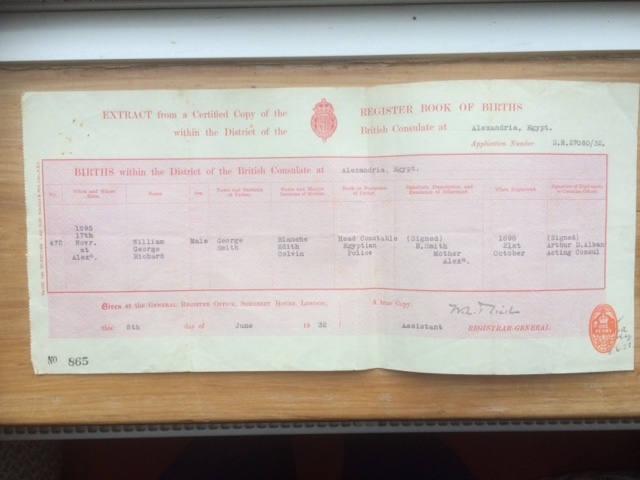
Blanche was born at South Camp, Aldershot and had come over to Egypt with her family. She had 5 siblings. Three of these also married children from the army barracks in Alexandria.
George was an auburn haired, blue eyed soldier (see the enlistment description above) who was born on the army barracks at Netley, Hampshire where his father William Smith sr was in the army. He joined up himself in Edinburgh on the 15 february 1883 aged 14 and 4 months. He was sent to Egypt aged 17. He married and lost his first wife Emma McHugh a few years earlier due to complications of child birth.


When William was one years old his sister Ruby Colvin Smith was born also in Alexandria. Sadly within a year their father George Simpson Smith died in the barracks in Cairo. No reason for death is given. Blanche’s father was to die in Alexandria the same year. Blanche had to seek permission from the army to take guardianship for her two children.
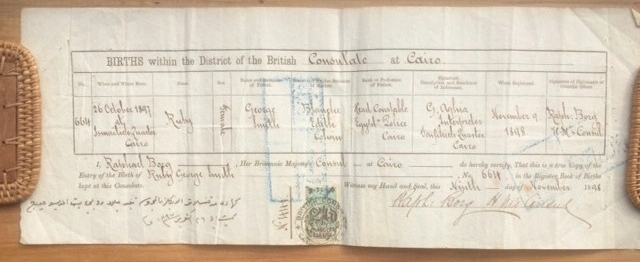
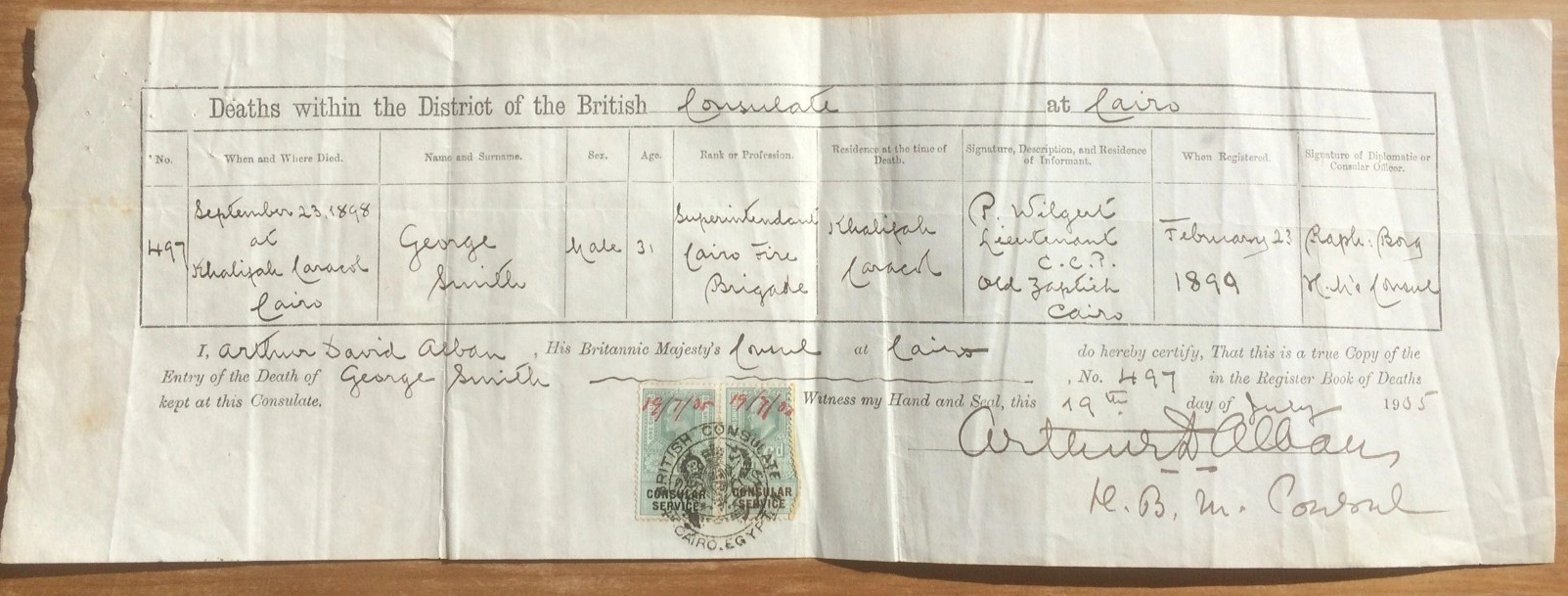

It seems that within a couple of years of George’s death Blanche travelled from Egypt to Edinburgh with her very young children to go and stay with George’s father (his mother had died) and siblings. It must have been a difficult voyage with two toddlers. By the census in 1901 she is recorded as a “pupil nurse” at the royal infirmary in Edinburgh. William Smith her father in law is the gate keeper there. William is recorded as living at the gatehouse and Ruby aged 3 is recorded as living with an aunt Rebecca Coles nee Smith in Perth.
It is actually through this particular census record that I was able to find out who the mysterious “George Smith” was – there are a lot of George Smiths out there. But Ruby is clearly recorded as being a “visitor” from Egypt in the census. And I had a hunch that Blanche might have left her with family. I then found Rebecca and George Coles marriage certificate on Scotland’s People. After that I found George and Blanche’s records.
My mother, uncle and aunt now all have a strong DNA match in Australia to a descendent of one of Rebecca and George’s siblings Charles Frederick Smith. So this DNA match pretty much 100% confirms the paper trail.




The next records for the family is 10 years later and William and Blanche are back in Alexandria. At one point in the year Ruby is recorded as being at residential home and school for orphans of scottish servicemen in Bushey, North London known as the “Royal Caledonian Asylum”. The school had about 100 boys and girls at the time.
Blanche married Pantaleon (or Pandely) Schilizzi on the 19th June 1911. Ruby appears to join them in Egypt in 1913.
They had two children that survived to adulthood Mary and Margaret. Two other children are mentioned on the same page in the consular records Sophie and Panteleon so there is a possiblity that Blanche had another pregnancy and that they did not survive. I can find no records of these children. Equally possible Pantaleon had other family living in Alexandria and these children are related to them – Pantaleon was born in Birkenhead, Liverpool so he was a British Subject. So any of his siblings may also have had children recorded in the consular records.


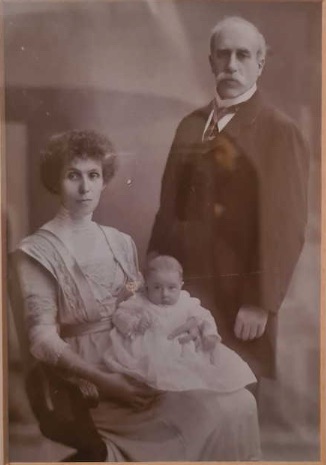



There is a record that William was working in a bank in Cairo from 1911 – 1913 from the age of 15-18. He used the letter as a reference of good character and it was in his military file with his application. George seems to have taken a boat to Alexandria to Southhampton right at the start of the war and signed up immediately. He initially he joined the first life guards. Acoording to a medical record he was sent out to Rouen on the 16th March 1916 and saw active service. However he was recalled to the Uk one the 29th September 1916 to accept a comission as an officer of the Middlesex regiment.



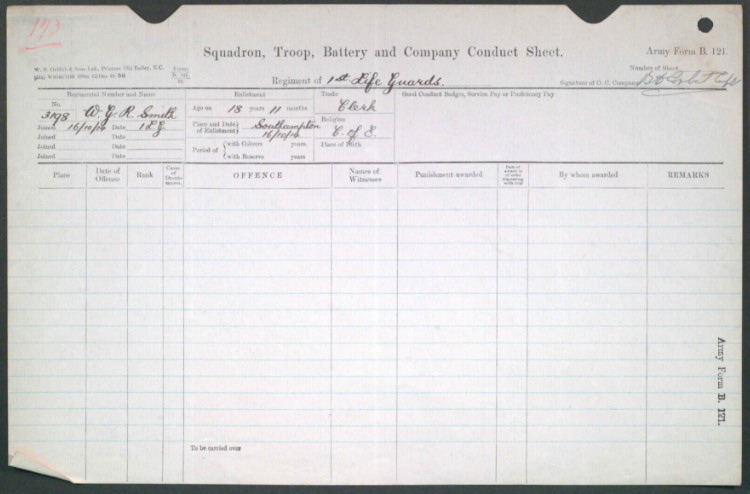



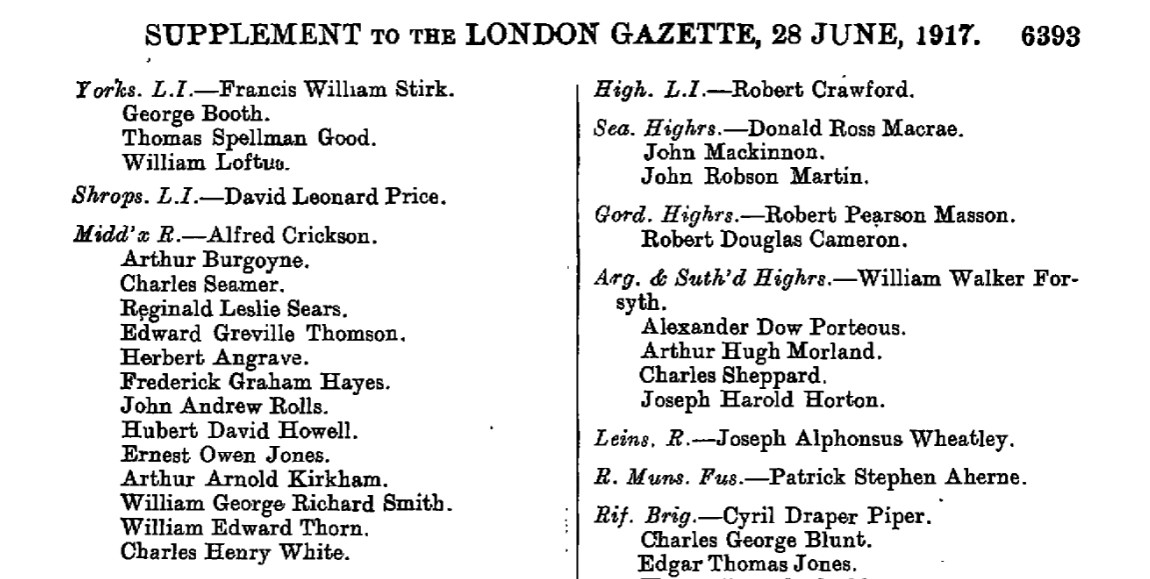
George headed out to Flanders in June 1817. . It was only a few months later he was lost in action on the battlefield outside Ypres. The date was the 16th August 1917. He was 22 years old.
His body was not recovered so his mother held out some hope that he had been taken prisoner. They were still in Egypt at this point and the records show three attempts made by Blanche to find William through the red cross. She clearly also wrote repeatedly to the Middlesex Regiment and was finally sent an account of what had happened to William in the form of the letter handed on from his commanding officer. The letter was found amongst his neice’s paper in 2021 after she died.
The records from the Battalion diary written at the time do clearly state that he was lost on that day however it seems it was not communicated to his mother or she perhaps she did not want to believe it.

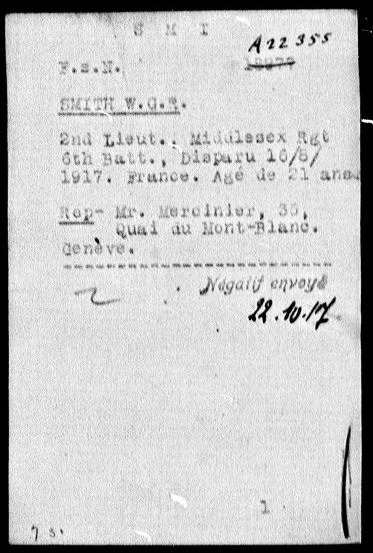

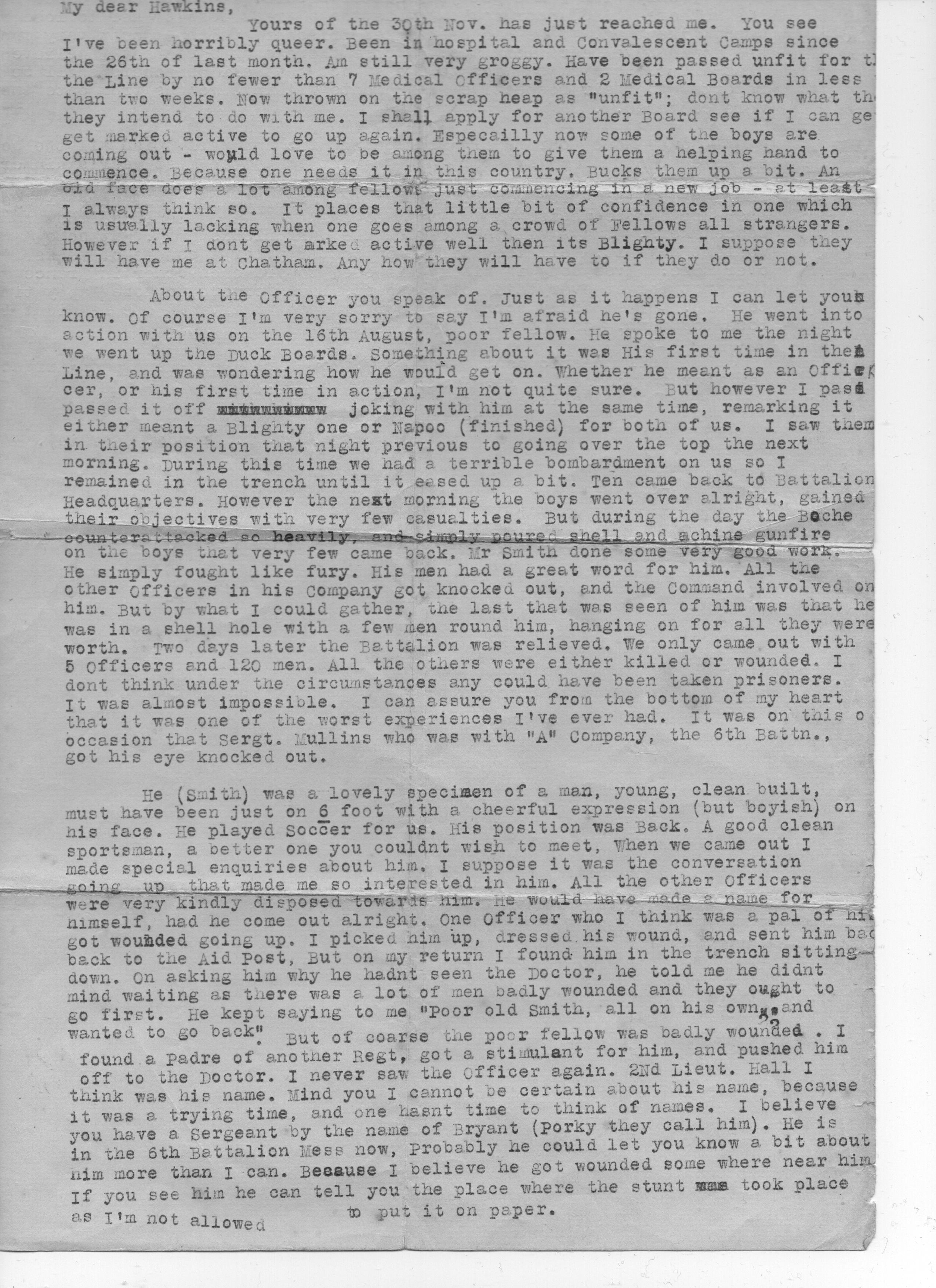


Since no body was recovered George’s name was added to a memorial at Tyne Cott, Flanders, Belgium.



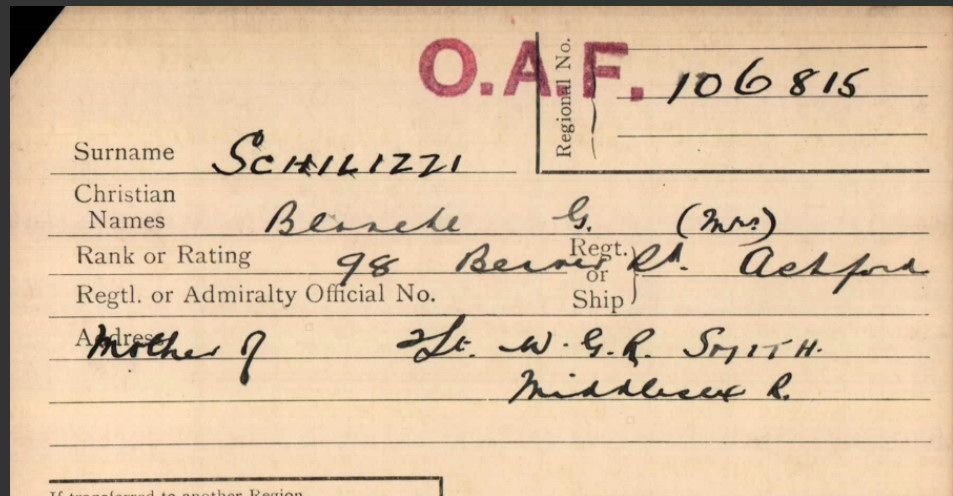

On the 11th November 2021 I was keen to find out more about George and I went onto the great war forum online to ask for advice. It was the people on that forum that helped me find much of the information shown here. When I explained that our wider family had not had any information about George one of them asked a friend who lived near Tyne Cott to visit the cemetary. She posted a photograph of George’s memorial with a poppy next to it that day. It was very kind of her and good to think of someone visiting the memorial in memory of him.
The discussion I had can be found here:
https://www.greatwarforum.org/topic/294203-2nd-lieutenant-william-george-richard-smith-2nd-battalion-middlesex-died-1917-flanders-memorial-tyne-cot/
I am not sure I would have found all the information without the help of these kind people.
Thanks to Mark Rawlins for finding the letter about George which he found amongst a box of things from his mother’s house.





